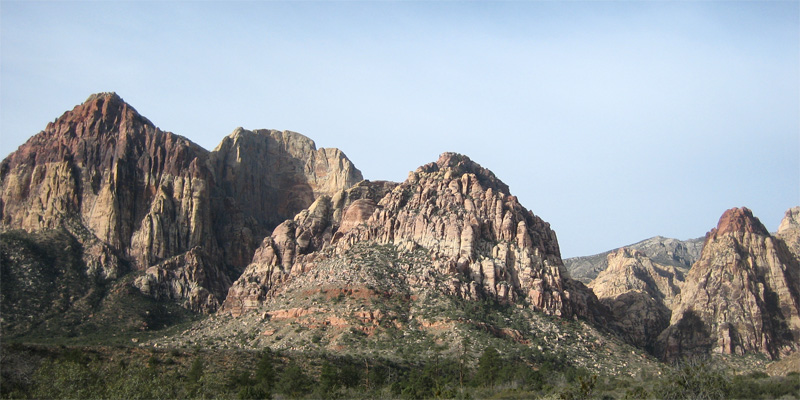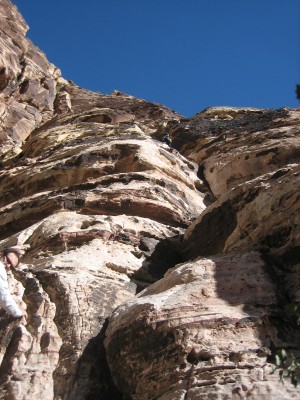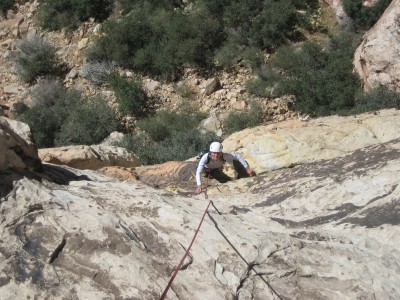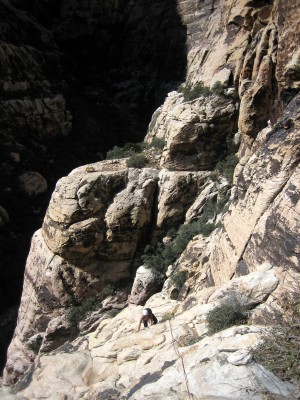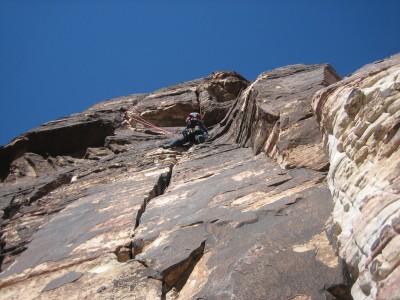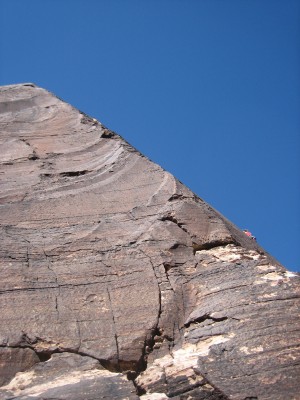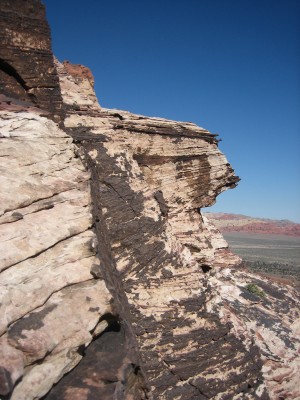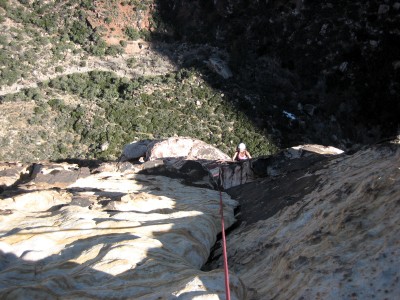Red Rocks, Las Vegas, Nevada, USACat in the Hat (5 pitches, 5.6+) |
|
After the introductory climbs in the First and Second Pullout crags we were ready to explore some of the traditional multi pitch climbs, which the Red Rock Canyon is famous for. Based on my experience with the grading conversion we were very conservative and started out with Cat in the Hat, located on the Mescalito Buttress, graded at an easy 5.6+. Juniper Canyon containing several classic multi pitch routes including "Cat in the Hat" and "Olive Oil", which we climbed. Move the mouse cursor over the picture to see mountain names etc. |
|
According to the guide book Cat in the Hat is one of the most visited routes in Red Rocks due to its easy grade and excellent climbing. It was thus advised to arrive early in order to beat the crowds, which we did. However, we were beaten by one party, and another party showed up before we began climbing. Quite surprising considering it was low season.
A look up at the first pitch of "Cat in the Hat", which follows the crack up right and then left. |
It was a bit of a challenge for me to follow the topos from the guide book, as I have not tried that before. However, it was not that difficult and we never got seriously off route on any of the multi pitch climbs we did in the canyon.
Elvira approaching the first belay. |
It was really nice getting high above the ground and we were quickly getting used to reading the sandstone. It has a very nice touch to it.
Elvira approaching the third belay. |
Most of the time, the route followed obvious cracks, which were very easy to protect with our brand new camelots :-)
The party ahead of us on pitch 4 - a great crack pitch. |
I had heard a lot of stories about how difficult it is to protect sandstone climbs and how insecure it can feel to climb it. However, with a few exceptions our protection felt pretty safe and inspired confidence to climb harder and harder.... However, I am glad we didn't get to test our placements - no falls at all during our stay :-)
A look up on the summit pyramid, which can either be climbed on the arête (5.10b/c variation) or via the face on the right where a climber in red T-shirt can be seen. |
As we got near the summit we had to choose between a bolted 5.10b/c arête or the original exposed traverse leading to the right face. The arête looked great, but we were a bit intimidated by the grade and we thus chose the traverse. The team before us had also climbed that way and the second was clearly not happy by the amount of protection the leader had put in! I thus tried to put in as much as possible to protect Elvira and didn't find it too hard to find good placements although one had to look out for them.
In order to get to the right face you have to traverse this part, which is not that easy to protect.... |
Finally we were looking up at the face of another beautiful crack. It was a lot of fun to lead it initially, but the crack got narrower and narrower until it eventually completely disappeared. It was now a slab climb for ~10 meters until another crack appeared. The slab was clearly the crux of the route and especially a couple of moves to clip a single bolt on the pitch will be remembered for a while! A great route that deserves its classic status.
Elvira on pitch 5 where she has just completed the slab and reached the final crack. |
|
